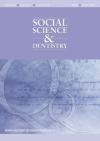Social Science and Dentistry

- Cover Date:
- June 2012
- Print ISSN:
- 2040-4263
- Vol:
- 2
- Issue:
- 1
The psychology of care and cure in dental anxiety
As Hill (2012) has demonstrated in a companion paper in this series, dental anxiety is prevalent and has an impact on the quality of life, and the quality of dental treatment performed – both in terms of limiting attendance for treatment and in the treatment likely to be performed (Milgrom et al., 2010). Furthermore, until recently services for people with dental fear and anxiety have largely focused on extreme levels of dental fear (dental phobia) and adopted a pharmacological management strategy. In this article I would like to take as a key premise the view that all patients have some level of anxiety about their treatment. From this it follows that it is helpful for the dental team to assess the patient’s level of anxiety and intervene proportionately. Patients with low levels of dental anxiety may require only low level interventions involving enhancing the environment and reducing the degree of uncertainty involved in treatment. Those patients with moderate levels of dental anxiety may require more intensive interventions, such as the provision of information on coping strategies. Finally for the phobic dental patient, I will outline the role that Cognitive Behavioural Therapy can play in overcoming dental fear.
Key words: Dental anxiety, Cognitive Behavioural Therapy
Assessment of DentAl Anxiety
Methods for the assessment of dental anxiety in both children and adults have been summarised by Buchanan (2012) in an earlier paper in this series. For the dental setting, brief questionnaire scales can be used as the basis for treatment planning and are acceptable both to patients and the dental team (Humphris et al., 2006; Hull and Humphris, 2010).
•
interventions for inDiviDuAls with low levels of Anxiety
Given the relationship between the development of dental anxiety and the experience of traumatic dental treatment, and further the role of latent inhibition in ameliorating the impact of negative events (Davey, 1989), it seems likely that dental anxiety may be prevented by the avoidance of negative experiences and the promotion of positive experiences for children attending the dental surgery. Examples of such approaches could include encouraging a warm and welcoming child friendly environment (some examples of how such an approach could be adopted are given below), explicit acclimatisation visits for children where no invasive treatment dental treatment is performed, and the use of fluoride supplements to inhibit caries and thus prevent invasive treatment (Marinho et al., 2002). However there is little evidence to confirm or refute the ability of such an approach to prevent future dental anxiety. For children attending with low levels of dental fear approaches that can be adopted include:
Rapport building. For example the use of a magic trick. Peretz and Gluck (2005) used a magic trick to encourage children who on a previous visit to the dental surgery had refused to enter the dental surgery, to sit in the dental chair and have a radiograph. The simple use of the trick increased co-operation when compared to no intervention or the use of Tell-Show-Do. It is unclear the mechanism of action for this technique but one element may be the rapport building involved. Voice control. There are a number of studies to demonstrate that children respond best to a moderately loud voice with a deep tone. Greenbaum et al., (1990) studied the effect of the loudness of the dentist’s voice on the disruptive behaviour of 40 children aged between 3 and 7 years. They found that issuing commands in a loud voice was more effective in reducing disruptive behaviour than using a normal voice level. The children who received loud commands reported finding the interaction more pleasurable than the normal voice level group. Distraction. Several types of distraction have been reported in the literature, including the use of video-taped cartoons, audio-taped stories and video games. Distraction techniques have been found to be as effective as relaxation based techniques, and superior to no intervention. Audio-taped distractions are more effective than videotaped, possibly since they allow children to close their eyes and hence avoid the feared stimulus (Ingersoll et al., 1984). The most significant reductions in anxiety related behaviour are found when the distracting material is made
15
- Article Price
- £15.00
- Institution Article Price
- £
- Page Start
- 15
- Page End
- 19
- Authors
- Tim Newton
Articles from this issue
- Title
- Pg. Start
- Pg. End
- Perceptions of Australian Mothers on Infant Teething: A Pilot Investigation Using a Mixed Methods Approach
- 3
- 11
- AFTER and beyond: cancer recurrence fears and a test of an intervention in oral and oropharyngeal patients
- 29
- 38
